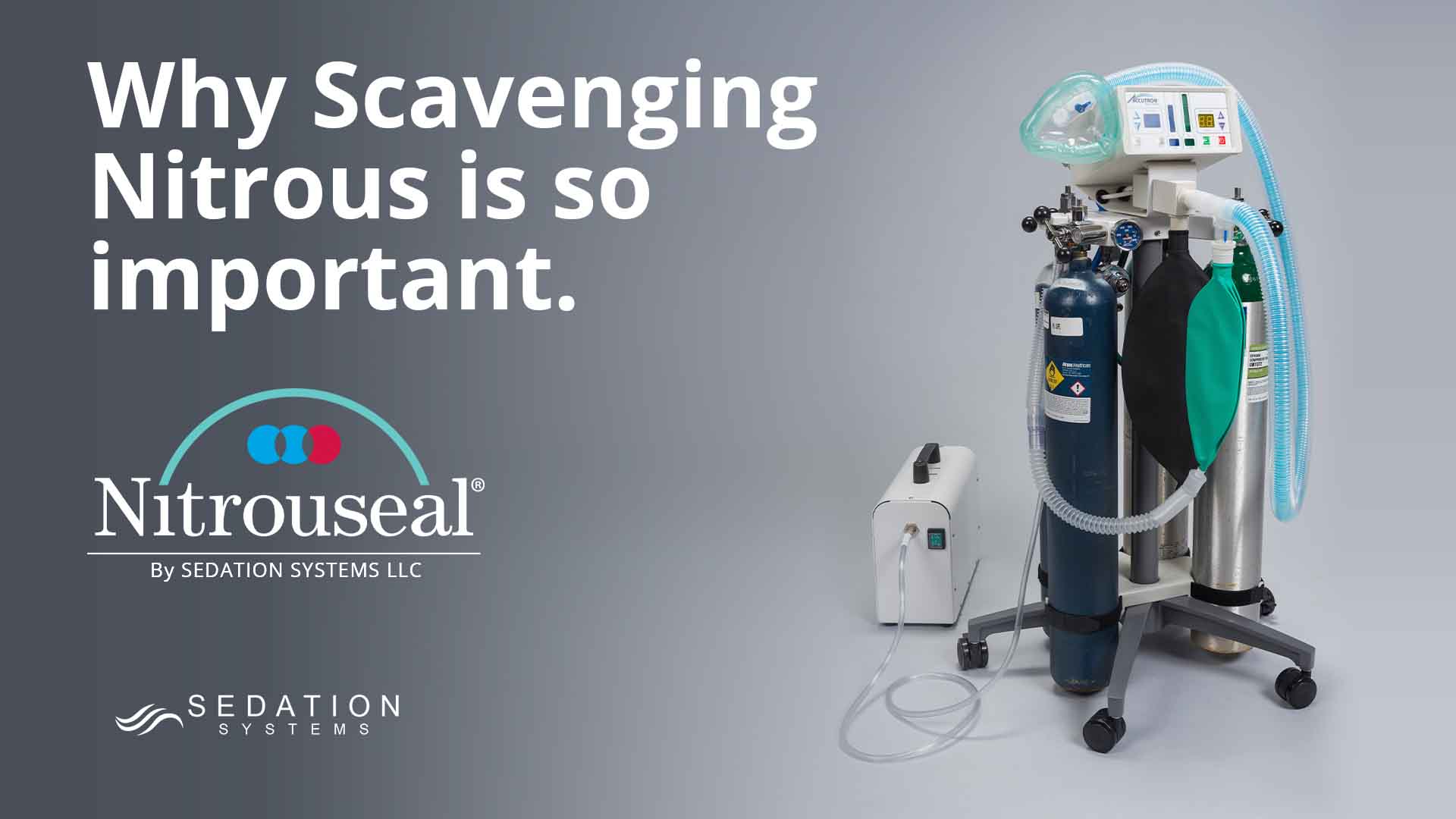Сompatible with Pro-Nox™ & NITRONOX™
MINISCAV® – Scavenging System for Nitrous Oxide
The CDC, NIOSH, and OSHA strongly recommend effective nitrous oxide waste gas scavenging. However, many popular systems lack a dedicated nitrous oxide scavenger system. To address this shortcoming, we designed MINISCAV® as a portable, easy-to-install scavenging system for nitrous oxide. This system is a superior alternative to in-wall suction and can be integrated seamlessly with your existing Pro-Nox™ and NITRONOX™ Systems.
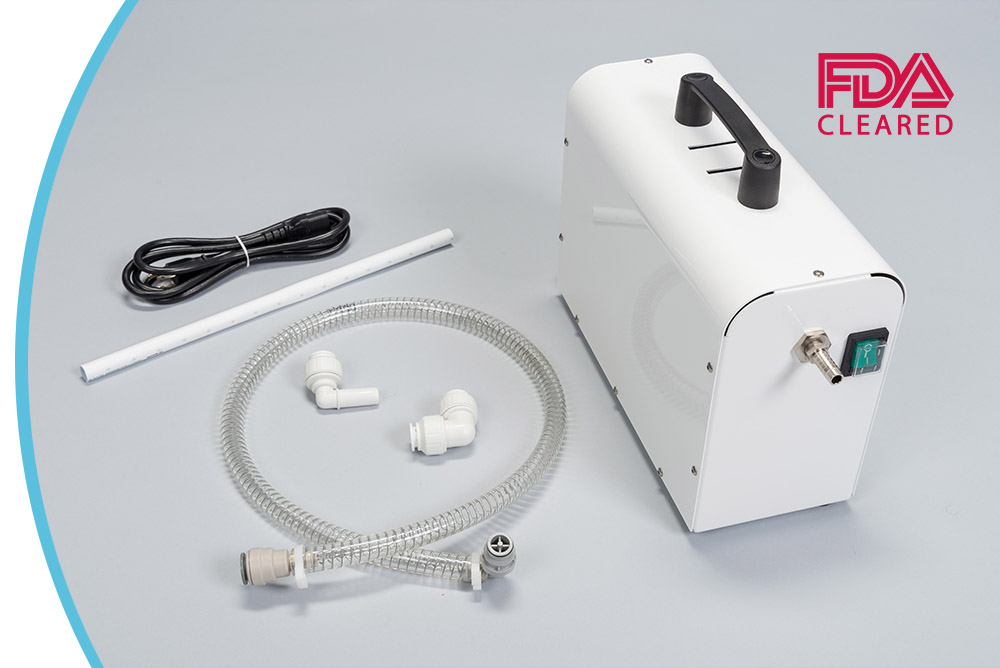
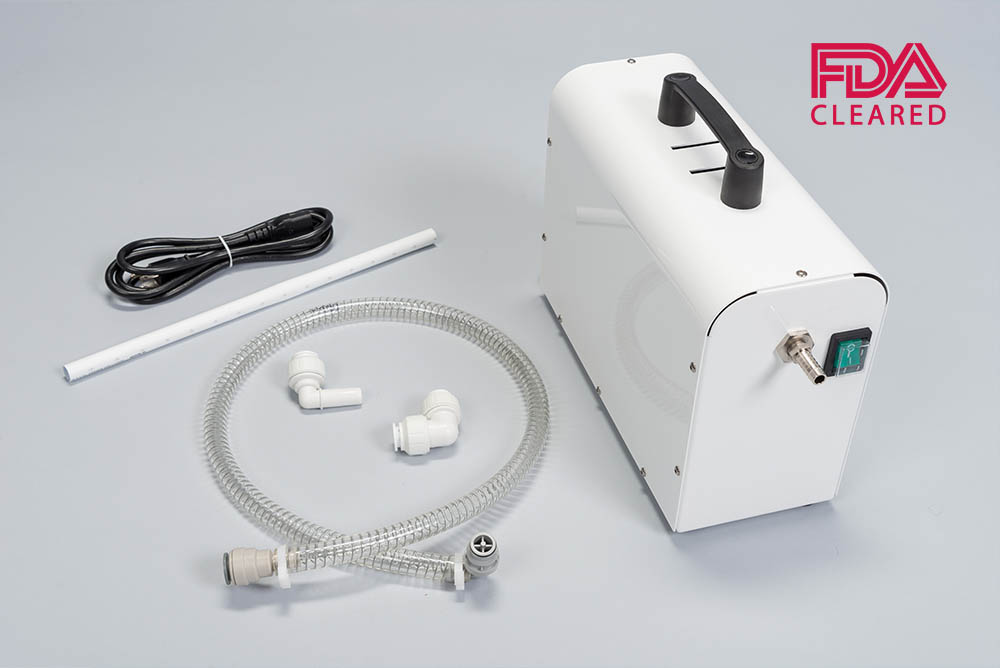
Efficient Nitrous Scavenging System
MINISCAV® offers a cutting-edge solution that efficiently eliminates exhaled nitrous oxide waste gas, creating a safe environment for patients and healthcare providers.
FDA-Cleared
MINISCAV® has received FDA clearance, adhering to stringent safety standards for nitrous oxide scavenging systems.
Seamless Integration
MINISCAV® is designed for seamless integration, enhancing the functionality of Nitrouseal®, Pro-NOX™, and NITRONOX™ systems without disrupting your treatment workflow.
Seamlessly upgrade your Pro-Nox™ or NITRONOX™ with the MINISCAV® – Scavenging System for Nitrous Oxide.

In today’s healthcare sector, MINISCAV®, an FDA-cleared scavenging system for nitrous oxide, sets the standard for safety and efficiency. Complying with CDC, NIOSH, and OSHA guidelines, this nitrous scavenger system eliminates exhaled nitrous waste gas, enhancing patient and staff well-being. Its design allows seamless integration with Pro-NOX™ or NITRONOX™, making it a valuable addition to any analgesic gas delivery system. Unlike many popular systems that lack a dedicated nitrous oxide scavenger, MINISCAV® fills this crucial gap. Its portability and simple installation negate the need for in-wall suction, offering a cost-effective solution. If you’re seeking a reliable, compliant scavenger system for nitrous oxide, MINISCAV® provides a comprehensive solution, exceeding all safety and efficiency standards, making it an indispensable asset for healthcare facilities.
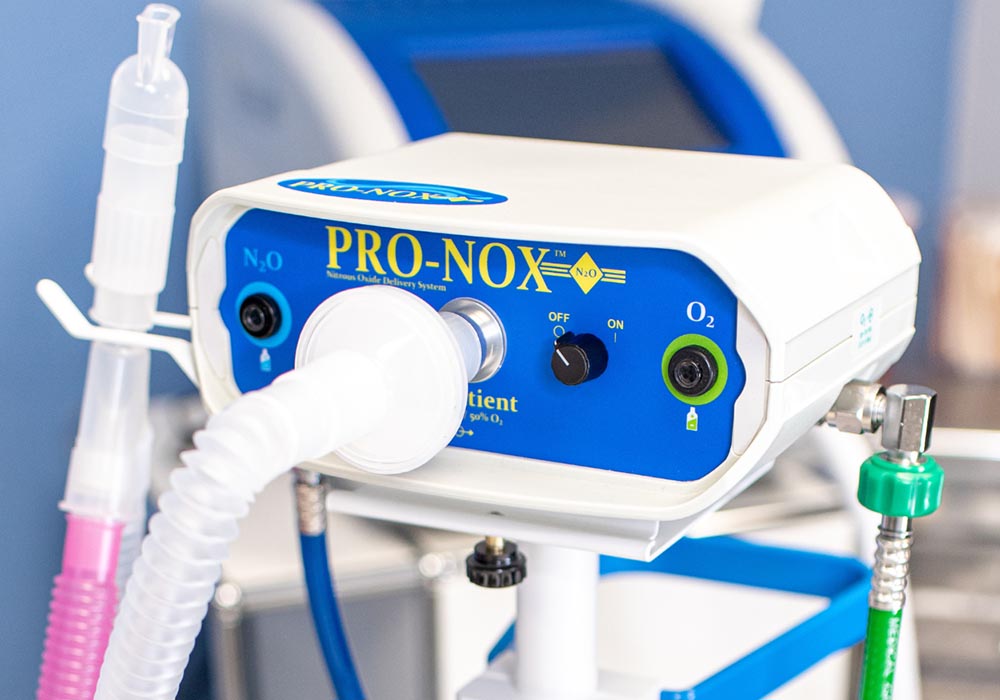
Pro-Nox™
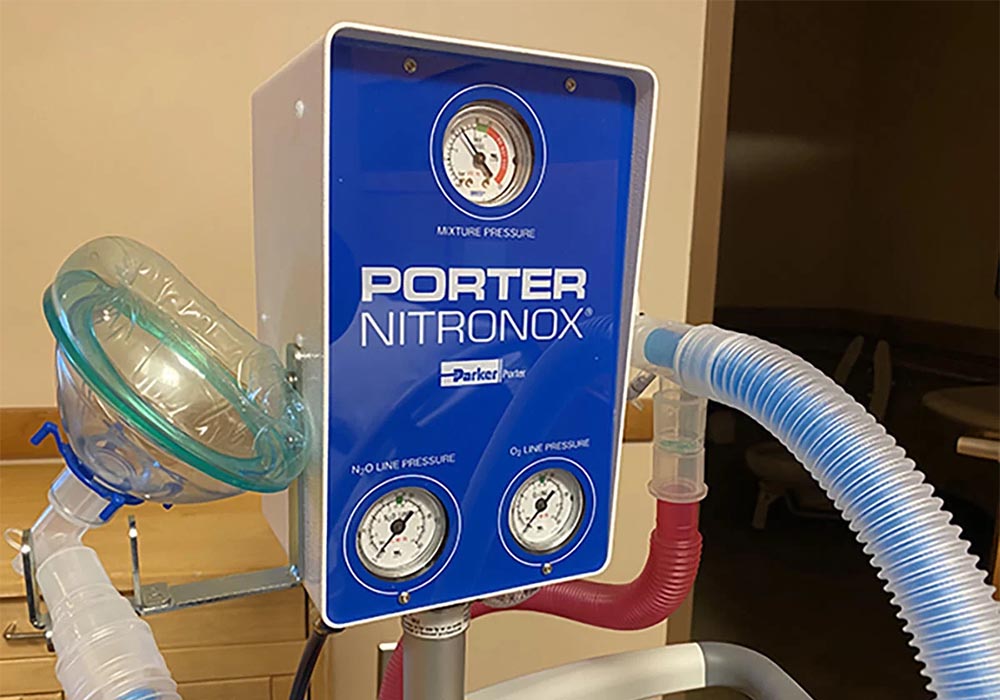
NITRONOX™
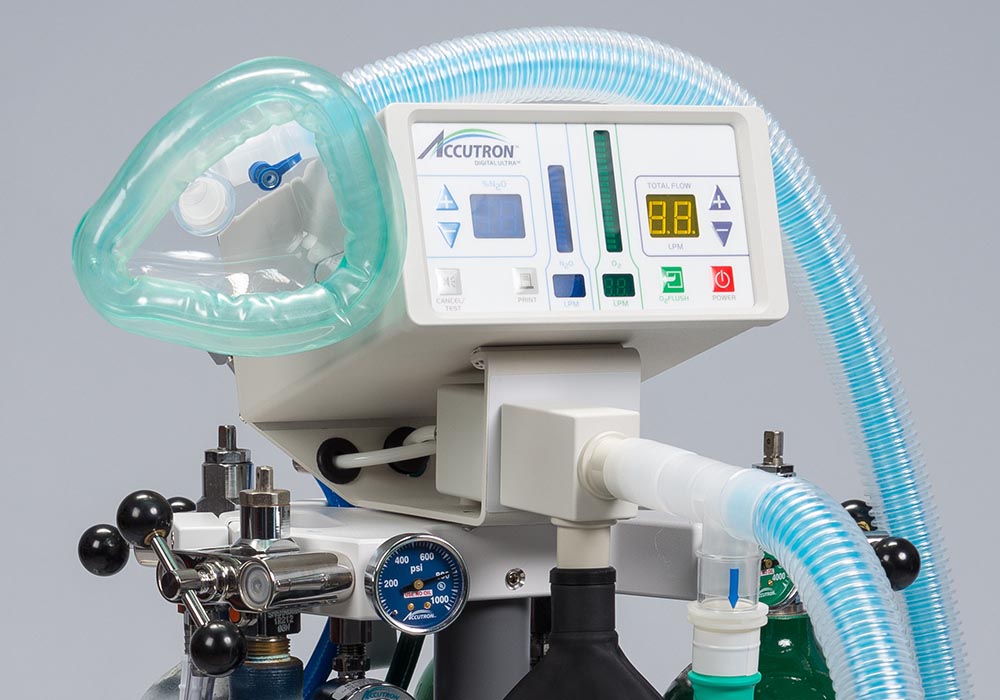
Nitrouseal®
How MINISCAV®– Scavenging System for Nitrous Oxide Works

MINISCAV® is an FDA-cleared nitrous scavenger system that is a robust alternative to in-wall suction systems, offering a portable and easy-to-use scavenging system for nitrous oxide. This unit is designed to scavenge 45 liters of nitrous waste gas per minute. MINISCAV® unit excels in capturing and venting nitrous oxide outside the facility. Its compact and portable design makes it a convenient choice for efficient waste gas removal, ensuring a safe environment for patients and healthcare providers. Known for efficient capturing, MINISCAV® specializes in eliminating exhaled nitrous waste gas. The device’s patented connection system facilitates gas evacuation outside the building through existing sanitary pipes, reinforcing its commitment to providing everyone with a clean and secure environment.
Exhaled Air Suction
Engineered to efficiently remove up to 45 liters per minute of nitrous waste gas, MINISCAV® specializes in the effective elimination of exhaled nitrous. This focus on nitrous oxide waste gas removal makes it a leading choice for healthcare settings prioritizing safety.
Efficient Capturing
As an FDA-cleared nitrous scavenger system, MINISCAV® excels in capturing and removing nitrous waste gas. Its state-of-the-art technology ensures a highly efficient and safe process, aligning with industry standards for nitrous oxide scavenging.
Gas Evacuation Outside the Building
MINISCAV® utilizes a patented connection system designed to evacuate waste gas outside the building safely. It guarantees a clean and secure environment through existing sanitary pipes, reinforcing its position as a comprehensive solution for nitrous oxide waste management.
Myths & Reality About Nitrous Waste Gas Scavenging

In the healthcare sector, misconceptions abound about scavenging systems for nitrous oxide. It’s essential to dispel these myths and underline the critical role of using an FDA-cleared nitrous oxide scavenger system like MINISCAV®. Myths often cloud the understanding of effective nitrous scavenging systems, creating potential risks. MINISCAV® offers an FDA-cleared nitrous scavenger system designed to align with CDC, NIOSH, and OSHA guidelines for nitrous oxide scavenging equipment. This system goes beyond traditional in-wall suction, serving as a comprehensive scavenger for nitrous oxide systems and ensuring a safer and more efficient environment.
Myth: Nitrous sinks to the floor of a room.
Reality: Contrary to popular belief, gases like nitrous oxide disperse uniformly in an area. Employing a proper scavenging system for nitrous oxide like MINISCAV® is critical to scavenging nitrous oxide and preventing harmful exposure to both patients and healthcare providers.
Myth: Minimal exposure of un-scavenged nitrous is harmless.
Reality: Occupational exposure to un-scavenged nitrous oxide can lead to severe health issues, including reduced fertility, miscarriages, and even chronic diseases, as outlined by CDC, NIOSH, and OSHA. Therefore, an FDA-cleared nitrous scavenger system is vital.
Myth: HVAC systems dilute nitrous effectively.
Reality: HVAC systems often exacerbate the problem by circulating nitrous oxide throughout the facility, making a dedicated nitrous oxide scavenger system indispensable for mitigating risks and ensuring a safe environment.
Myth: Nitrous exposure is safe for pregnant women.
Reality: Nitrous oxide exposure significantly heightens the risk of miscarriage, especially during the crucial first trimester. Using a certified nitrous oxide scavenging system is critical for minimizing such risks.
Myth: Scavenging is only possible with wall suction.
Reality: Utilizing patented vent connectors, MINISCAV® is an efficient nitrous oxide scavenger system that can scavenge and evacuate waste gas without in-wall suction systems.
Why is Nitrous Gas Scavenging Important?
The importance of nitrous gas scavenging lies in safeguarding the health and well-being of patients and healthcare providers. Nitrous oxide is commonly used in medical settings, such as dental practices, surgical centers, and hospitals, for its anesthetic and analgesic properties. However, the gas can pose significant health risks if not properly managed. The scavenging process mitigates these risks by effectively reducing exposure to potentially harmful nitrous oxide fumes.
Occupational exposure to nitrous oxide has been linked to various health issues, including but not limited to respiratory ailments, reduced fertility, neurological problems, and even potential miscarriages for pregnant healthcare providers. These risks make facilities need to implement efficient nitrous oxide scavenger systems. Regulatory bodies like the CDC, NIOSH, and OSHA have established guidelines and recommendations emphasizing the critical need for effective scavenging systems in healthcare settings where nitrous oxide is used.
Beyond individual health risks, failure to properly scavenge nitrous oxide can also have legal and financial repercussions for healthcare facilities. Non-compliance with established safety guidelines can lead to penalties, lawsuits, and a tarnished reputation, which could harm a healthcare provider’s practice. Thus, implementing an FDA-cleared nitrous scavenger system, such as MINISCAV®, is a health precaution and risk management strategy.
Technological advancements have led to the development of highly efficient scavenging systems capable of capturing and venting nitrous oxide fumes outside the healthcare facility. These modern systems often have features like automated monitoring and alert systems, making them practical and user-friendly.
In summary, nitrous gas scavenging is a procedural necessity and a critical safety measure. It protects the most valuable assets in any healthcare setting: the patients and the healthcare providers who care for them.
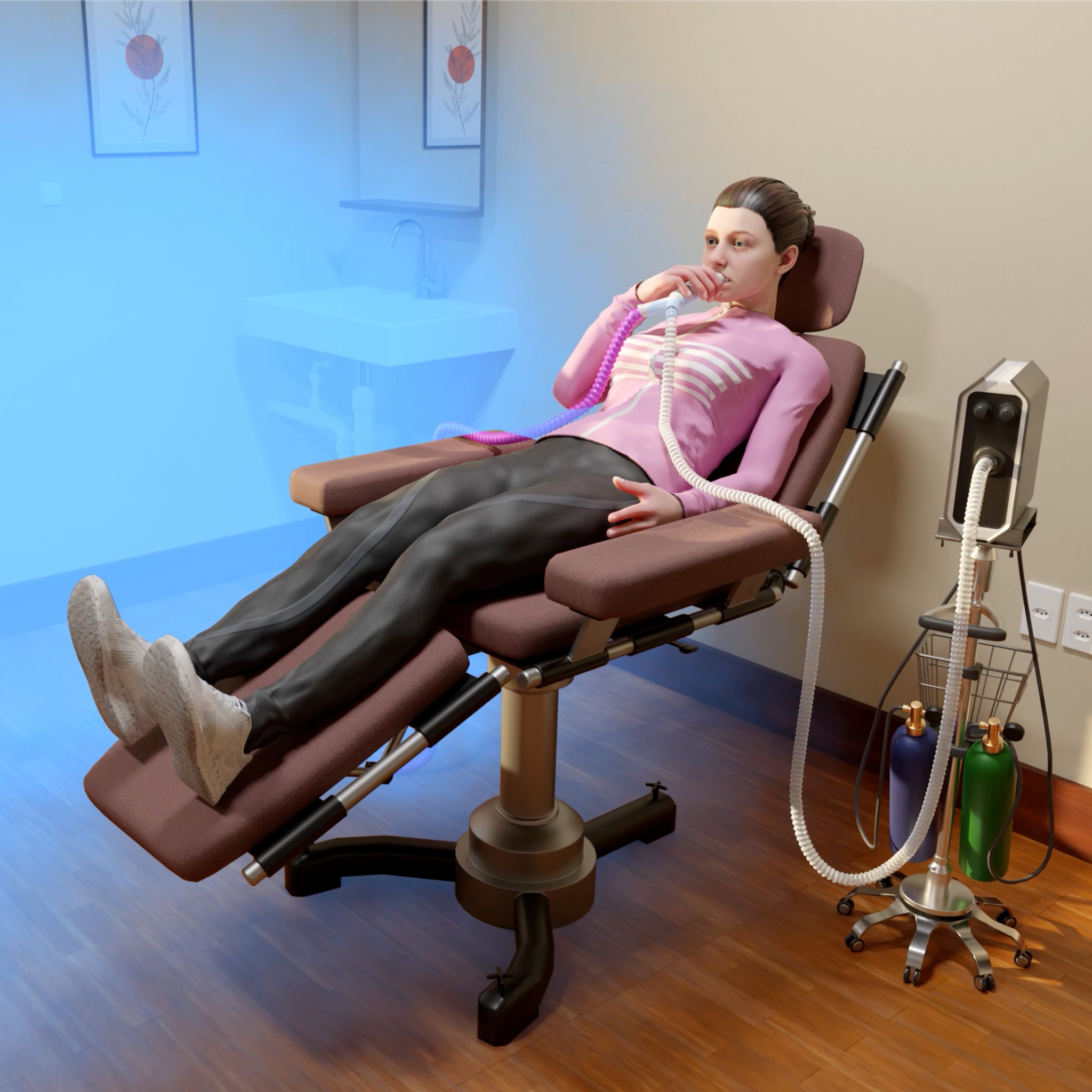
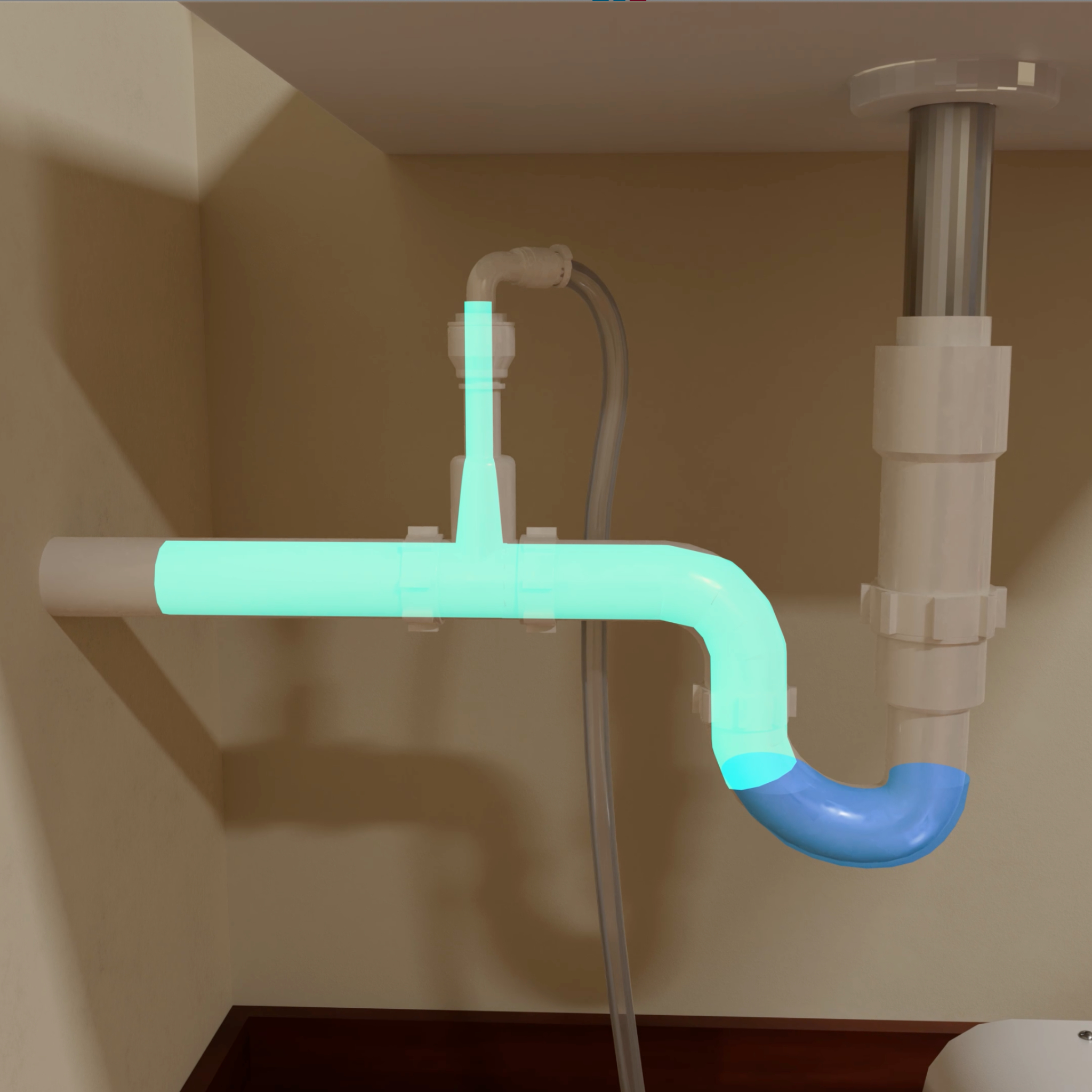
What is Nitrous Gas Scavenging?
Nitrous gas scavenging is a specialized procedure to capture and safely eliminate nitrous oxide fumes from healthcare environments. This process is essential in medical settings such as dental offices, hospitals, and surgical centers where nitrous oxide is frequently used as an anesthetic or analgesic agent. Scavenging systems for nitrous oxide, such as MINISCAV®, are designed to serve this purpose by creating a safe environment for patients and healthcare providers.
The significance of nitrous gas scavenging cannot be overstated. While beneficial for its anesthetic properties, nitrous oxide can pose various health risks when not properly managed. Inadequate scavenging can lead to many complications, including respiratory issues, reduced fertility, and other long-term health problems. As such, guidelines from organizations like the CDC, NIOSH, and OSHA emphasize the critical need for effective nitrous oxide scavenger systems in healthcare settings.
Scavenging systems use a combination of vacuum pumps and venting mechanisms to capture the exhaled nitrous oxide from patients. These systems are then responsible for directing these captured gases safely out of the treatment area, usually venting them outside the building through specialized exhaust systems. Modern scavenging systems have become highly sophisticated, incorporating FDA-cleared technology and adhering to strict safety standards, making them more efficient and reliable than ever before.
It’s important to note that nitrous gas scavenging is not a one-size-fits-all solution. Different healthcare settings may require different types of scavenging equipment. However, the end goal remains to minimize the risk associated with nitrous oxide exposure. This is where systems like MINISCAV® come into play, offering a comprehensive solution that is efficient and versatile enough to adapt to various medical environments.
In summary, nitrous gas scavenging is a crucial component of healthcare safety protocols designed to capture and eliminate potentially harmful nitrous oxide fumes from medical environments. Adherence to established guidelines and certified scavenging systems is essential for ensuring the well-being of patients and healthcare providers.
Common Uses for MINISCAV®
Dermatology
- Laser Treatments
- Laser Hair Removal
- Skin Cancer Treatment
- Vein Therapy
- Skin Biopsies
- Cool Sculpting
- Photodynamic
- Burn Debridement
- Tattoo Removal
- Eyelash Enhancements
- Permanent Make-Up
- Nitrous for Office Procedures
- Injections
- Fillers-Microdermabrasion
- Chemical Peels
ER / Hospital
- Pain/Anxiety
- Catheters
- Laceration Repair
- Diagnostic Imaging
- Ports/IV’s
- Venipuncture
- Burn Debridement
- Fracture Reduction
- Wound Care
- Nitrous Sedation
Gynecology
- IUD Placement and Removal
- LEEP Procedures
- Essure Tubal Occlusion
- Vaginal Rejuvenation
- Dilation and Curettage
- Endometrial Biopsy
- Nexplanon Insertion
- Vulvar Biopsy
- Uterine Ablation Procedures
- Hysteroscopies
- Urodynamic Testing
- Vulvar Revision or Labiaplasty
- Laser Vaginal Treatment
- Endometrial Ablation
- Pessary Fitting/Insertion
- Remove/Destruction of Condyloma
- Nitrous for Office Procedures
Orthopedics
- Joint/Cortisone Injections
- Fracture Care
- Stem Cell Therapy
- Bursitis
- Casting and Splinting
- Dislocation
- Viscosupplementation Treatment of Arthritis
- Bone Infections
- Nitrous Sedation
Plastic Surgery
- Tattoo Removal
- Cool Sculpting
- Aesthetic Injection
- Permanent Make-Up
- Endovenous Laser Treatment
- Botox Injections
- Sclerotherapy
- Minimally Invasive Procedures
- Hair Restoration
- Thermage
- Ultherapy
- Nitrous for Office Procedures
Podiatry
- Laceration Repair
- Foreign Body Removal
- Blister Treatment
- Toenail Removal
- Soft Tissue Mass Biopsy
- Casting of Fractures
- In-Grown Toenail
- Topical Treatments for Fungus and Infection
- Cortisone Injection
- Nail Biopsy
- Toenail Trimming
- Painful Procedures
- Nitrous Sedation
Urology
- Cystoscopies
- Urolifts
- Bladder Botox Injections for Overactive Bladder
- Bladder Biopsy
- Rezum Procedure
- Removal of Genital Warts
- Prostate Biopsy
- Vasectomies
- Prostate, Renal and Testicular Ultrasounds
- Saturation Biopsy
- Stent Removal
- Treatments for Benign Prostate Hypertrophy
- Nitrous for Office Procedures
MINISCAV® – Nitrous Scavenger is Widely Used Across the USA in Combination with Nitrouseal®

Nitrouseal® and MINISCAV® are widely used across the USA, providing a comprehensive solution for medical professionals focused on efficient and safe patient care. With Nitrouseal®‘s advanced analgesic gas delivery system and MINISCAV®‘s FDA-cleared scavenging device, healthcare providers can rely on this trusted combination to enhance their practice and ensure the optimal comfort and safety for patients in diverse medical settings.
Hospitals Offering Nitrouseal®

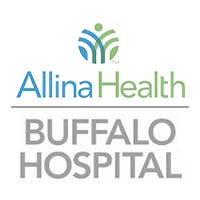





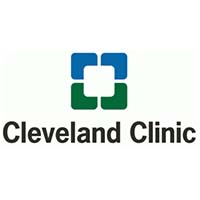

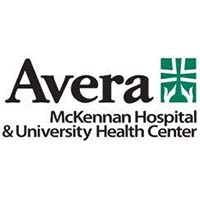
FAQ About Scavenging System for Nitrous Oxide
What Guidelines Exist for Nitrous Gas Scavenging?
The practice of scavenging nitrous oxide is governed by a set of rigorous guidelines established by authoritative bodies such as the Centers for Disease Control and Prevention (CDC), the National Institute for Occupational Safety and Health (NIOSH), and the Occupational Safety and Health Administration (OSHA). These guidelines aim to ensure the effective operation of scavenging systems for nitrous oxide, thereby safeguarding the health of healthcare providers and patients.
CDC guidelines provide comprehensive protocols that cover the design, maintenance, and operation of nitrous oxide scavenger systems. They emphasize the need for a nitrous scavenging system that is efficient and compliant with safety standards. On the other hand, the NIOSH recommendations focus on reducing occupational exposure to nitrous oxide fumes, advocating for using an FDA-cleared nitrous scavenger system like MINISCAV®.
OSHA guidelines are particularly stringent, ensuring that nitrous oxide scavenging equipment meets the highest safety and performance benchmarks. They often require that a scavenger system for nitrous oxide should be able to capture and remove at least 99% of the nitrous oxide released during medical procedures. Compliance with these guidelines is not just a best practice but often a legal requirement, with penalties for non-compliance ranging from fines to potential closure of the medical facility.
Systems like MINISCAV® offer a robust solution for healthcare providers, aligning with these guidelines while providing user-friendliness and efficiency, making them an invaluable asset in any medical setting. It’s not uncommon for guidelines to also recommend using Porter nitrous scavenger systems as an alternative, but systems like MINISCAV® often surpass them in terms of efficiency and ease of use.
In summary, the guidelines for nitrous gas scavenging set by CDC, NIOSH, and OSHA serve as a framework for healthcare providers to follow. Adherence to these guidelines is essential for ensuring the safe and effective removal of nitrous oxide fumes, creating a safer environment for everyone involved.
Can Nitrous Oxide Scavenging Systems Be Used in Various Medical Settings?
Modern nitrous oxide scavenging systems are remarkably versatile and can be deployed in various medical environments. Whether it’s a dental office, a surgical center, or a hospital, the importance of an effective scavenging system for nitrous oxide cannot be overstated. Systems like MINISCAV®, for instance, are FDA-cleared and align well with guidelines from authoritative bodies such as the CDC, NIOSH, and OSHA, ensuring that they meet the safety and efficiency standards required across diverse healthcare settings.
One of the critical features of a versatile scavenger system for nitrous oxide like MINISCAV® is its portability. Unlike traditional wall suction systems, it can be easily moved from one room to another or between different facilities. This is particularly advantageous for healthcare settings that require a nitrous scavenger system but may not have the infrastructure to support a built-in wall suction system.
Another point to consider is the adaptability of modern nitrous oxide scavenger systems. Systems like MINISCAV® are designed for seamless integration with other medical equipment and systems, such as Nitrouseal®, providing a comprehensive nitrous scavenging system. This allows healthcare providers to quickly implement these systems into their existing workflows without disruption, enhancing patient safety and operational efficiency.
Furthermore, these scavenging systems for nitrous oxide are more expansive than just standard medical settings. They can also be used in specialized environments like mobile medical units, research facilities, and even veterinary clinics, expanding their utility and making them a practical choice for nitrous oxide scavenging equipment.
In summary, modern nitrous oxide scavenging systems like MINISCAV® offer various features that make them highly versatile and adaptable, suitable for deployment in different medical settings. Their portability, ease of use, and compliance with regulatory guidelines ensure they can effectively serve as a nitrous oxide scavenger across multiple healthcare environments.
How Does MINISCAV® Improve Nitrous Oxide Scavenging, and What is the Role of Nitrouseal®?
The practice of scavenging nitrous oxide is governed by a set of rigorous guidelines established by authoritative bodies such as the Centers for Disease Control and Prevention (CDC), the National Institute for Occupational Safety and Health (NIOSH), and the Occupational Safety and Health Administration (OSHA). These guidelines aim to ensure the effective operation of scavenging systems for nitrous oxide, thereby safeguarding the health of healthcare providers and patients.
CDC guidelines provide comprehensive protocols that cover the design, maintenance, and operation of nitrous oxide scavenger systems. They emphasize the need for a nitrous scavenging system that is efficient and compliant with safety standards. On the other hand, the NIOSH recommendations focus on reducing occupational exposure to nitrous oxide fumes, advocating for using an FDA-cleared nitrous scavenger system like MINISCAV®.
OSHA guidelines are particularly stringent, ensuring that nitrous oxide scavenging equipment meets the highest safety and performance benchmarks. They often require that a scavenger system for nitrous oxide should be able to capture and remove at least 99% of the nitrous oxide released during medical procedures. Compliance with these guidelines is not just a best practice but often a legal requirement, with penalties for non-compliance ranging from fines to potential closure of the medical facility.
Systems like MINISCAV® offer a robust solution for healthcare providers, aligning with these guidelines while providing user-friendliness and efficiency, making them an invaluable asset in any medical setting. It’s not uncommon for guidelines to also recommend using Porter nitrous scavenger systems as an alternative, but systems like MINISCAV® often surpass them in terms of efficiency and ease of use.
In summary, the guidelines for nitrous gas scavenging set by CDC, NIOSH, and OSHA serve as a framework for healthcare providers to follow. Adherence to these guidelines is essential for ensuring the safe and effective removal of nitrous oxide fumes, creating a safer environment for everyone involved.
How Does MINISCAV® Improve Nitrous Oxide Scavenging?
MINISCAV® represents a significant advancement in nitrous oxide scavenging, serving as a robust, FDA-cleared scavenging system for nitrous oxide. Designed to excel in safety and efficiency, MINISCAV® captures and safely vents nitrous oxide fumes outside the healthcare facility, in line with CDC, NIOSH, and OSHA guidelines. The system operates at high-efficiency rates, outpacing many traditional systems and acting as a reliable nitrous oxide scavenger system. Its adaptability allows seamless integration with existing medical systems, including Nitrouseal®, providing a comprehensive nitrous scavenging system for healthcare providers.
Nitrouseal®, on the other hand, is an advanced analgesic gas delivery system that synergizes perfectly with scavenger systems for nitrous oxide like MINISCAV®. While MINISCAV® focuses on the scavenging nitrous oxide aspect, Nitrouseal® is responsible for the controlled delivery of nitrous oxide for medical procedures. It ensures that the gas is administered in a manner that is both safe and effective for the patient. This dual functionality makes the combination of Nitrouseal® and MINISCAV® a comprehensive solution for nitrous oxide administration and scavenging, meeting or exceeding all regulatory standards.
Both systems are FDA-cleared, thereby meeting rigorous safety standards. They can be used in diverse healthcare settings, from dental offices to surgical centers, offering versatility that many traditional nitrous oxide scavenging equipment lacks. Moreover, their user-friendly designs and ease of maintenance make them efficient choices for healthcare providers.
In summary, MINISCAV® improves nitrous oxide scavenging by offering an efficient, safe, and adaptable solution, while Nitrouseal® complements this by providing advanced, controlled gas delivery. Together, they form a comprehensive system for administering and scavenging nitrous oxide, ensuring patient care’s utmost safety and efficiency.
Is Wall Suction Necessary for Effective Nitrous Gas Scavenging?
The notion that wall suction is indispensable for an effective scavenging system for nitrous oxide is a misconception. Advancements in medical technology have given rise to modern systems like MINISCAV®, which have demonstrated the ability to scavenge nitrous oxide without the need for wall suction. These advanced systems align well with guidelines from authoritative bodies like the CDC, NIOSH, and OSHA, ensuring safety and efficacy.
Modern nitrous oxide scavenger systems, such as MINISCAV®, offer portability, ease of use, and seamless integration with existing medical equipment, serving as an all-encompassing nitrous scavenging system. These systems often have FDA clearance, ensuring they meet stringent safety and performance benchmarks. With the capability to capture and vent nitrous oxide outside the healthcare facility, they offer an often higher efficiency than traditional wall suction systems.
One advantage of a portable scavenger system for nitrous oxide like MINISCAV® is its versatility. It can be easily moved between rooms or facilities, offering flexibility that wall suction systems often lack. This is particularly beneficial for smaller healthcare settings or mobile medical units that require a nitrous scavenger system but do not have the infrastructure to support wall suction.
Another point to consider is the maintenance and cost implications. Wall suction systems often require extensive installation and regular upkeep, adding to the operational costs. In contrast, modern nitrous oxide scavenger systems are generally easier to maintain and can be more cost-effective in the long run.
In summary, while wall suction was once considered necessary for effective nitrous oxide scavenging, modern technology has rendered this obsolete. Systems like MINISCAV® offer a highly efficient, FDA-cleared, and versatile alternative for nitrous oxide scavenging equipment, making them an excellent choice for healthcare providers looking to optimize safety and efficiency.
What Features Should a Good Nitrous Oxide Scavenger System Have?
A high-quality nitrous oxide scavenger system should meet stringent criteria for efficacy and safety. One of the foremost considerations is FDA clearance. An FDA-cleared nitrous scavenger system, like MINISCAV®, assures the product meets medical-grade safety standards. Such a system has been rigorously tested and vetted for effectively removing nitrous oxide fumes from healthcare environments.
Efficiency is another key feature. The scavenging system for nitrous oxide should be capable of capturing and venting out a significant percentage of nitrous oxide released during medical procedures. Systems that operate at lower efficiency rates compromise the safety of both patients and healthcare providers, thereby failing to align with the recommended guidelines set forth by authoritative bodies like the CDC, NIOSH, and OSHA.
Compliance with these guidelines is not just a recommendation but often a requirement for healthcare facilities. The scavenger system for nitrous oxide should be versatile enough to integrate seamlessly with existing medical equipment and workflows. Moreover, it should be user-friendly, requiring minimal training for healthcare providers. For instance, MINISCAV® is known for its seamless integration with various analgesic delivery systems, serving as a comprehensive nitrous scavenging system.
Another feature to consider is the system’s adaptability to different healthcare settings. Whether it’s a dental office, a surgical center, or a hospital, the nitrous oxide scavenger should be versatile enough to adapt to various medical environments.
Finally, consider the system’s maintenance needs. A sound nitrous oxide scavenger system should be easy to clean and maintain, with readily available replacement parts and customer support.
In summary, an excellent nitrous oxide scavenger system should be FDA-cleared, efficient, compliant with regulatory guidelines, versatile, user-friendly, and easy to maintain. Investing in a system meeting these criteria is critical to ensuring a safe and effective healthcare environment.
Can Standard HVAC Systems Suffice for Nitrous Gas Scavenging?
The simple answer is no; standard Heating, Ventilation, and Air Conditioning (HVAC) systems are not designed to serve as an effective scavenging system for nitrous oxide. While HVAC systems can circulate air throughout a facility, they need specialized capabilities to capture and safely remove nitrous oxide fumes. HVAC systems can disperse nitrous gas throughout the facility, increasing the risk of exposure for patients and healthcare providers.
The need for a dedicated nitrous oxide scavenger system arises from the specific health risks associated with exposure to nitrous oxide, including respiratory issues and reduced fertility. Systems like MINISCAV®, an FDA-cleared nitrous scavenger system, are specifically engineered to capture and safely vent nitrous oxide fumes outside the medical facility, ensuring compliance with guidelines set forth by CDC, NIOSH, and OSHA.
In contrast, HVAC systems lack the precision and control to scavenge nitrous oxide effectively. They need to be equipped with the necessary filters or exhaust systems to handle nitrous oxide, and they are generally compliant with the stringent safety standards required for medical-grade nitrous oxide scavenging equipment. Standard HVAC systems need more efficiency and safety than a Porter nitrous scavenger system, a more specialized solution.
Healthcare facilities are strongly advised to invest in specialized scavenger systems for nitrous oxide, such as MINISCAV®, which offers a robust and compliant solution for management. These systems are more efficient and designed to seamlessly integrate with existing medical equipment, thereby providing a comprehensive nitrous scavenging system that enhances the safety and efficiency of medical practices.
In summary, standard HVAC systems must be improved for the specialized task of nitrous oxide scavenging. A dedicated, FDA-cleared nitrous oxide scavenger system is recommended for ensuring the safe and effective removal of nitrous oxide fumes from healthcare environments.
What Are the Health Risks Associated with Exposure to Un-scavenged Nitrous Gas?
Exposure to un-scavenged nitrous oxide poses various health risks of particular concern in medical settings where nitrous oxide is used as an anesthetic or analgesic. This underscores the importance of employing a robust scavenging system for nitrous oxide like MINISCAV®, designed to capture and safely remove nitrous oxide fumes, thereby reducing the risks associated with exposure.
One of the most immediate health risks is respiratory issues. Inhaling nitrous oxide can lead to respiratory distress or exacerbate existing respiratory conditions. This is why using an FDA-cleared nitrous scavenger system is often mandated in healthcare settings. Beyond respiratory concerns, long-term exposure to un-scavenged nitrous oxide can result in reduced fertility. Several studies have shown that healthcare workers exposed to nitrous oxide are at a higher risk of experiencing fertility problems, emphasizing the need for effective nitrous oxide scavenger systems.
Furthermore, chronic exposure to nitrous oxide fumes has been linked to neurological problems, including but not limited to numbness, tingling, and even long-term nerve damage. Regulatory bodies like the CDC, NIOSH, and OSHA have issued guidelines emphasizing the necessity of nitrous oxide scavenging equipment to mitigate these risks. Even systems like a Porter nitrous scavenger system are considered, but newer technologies often provide more efficient solutions.
Other potential health problems include an increased risk of miscarriage for pregnant healthcare workers and a heightened risk of developing chronic illnesses over time. As such, using a scavenger for nitrous oxide systems is not just a recommendation but a crucial safety measure.
In summary, the health risks associated with exposure to un-scavenged nitrous oxide are immediate and long-term, affecting the respiratory system and reproductive and neurological health. The employment of a reliable scavenging system for nitrous oxide is essential for minimizing these risks and ensuring a safe healthcare environment.
Can Nitrous Oxide Scavenging Systems Be Used in Various Medical Settings?
Modern nitrous oxide scavenging systems are remarkably versatile and can be deployed in various medical environments. Whether it’s a dental office, a surgical center, or a hospital, the importance of an effective scavenging system for nitrous oxide cannot be overstated. Systems like MINISCAV®, for instance, are FDA-cleared and align well with guidelines from authoritative bodies such as the CDC, NIOSH, and OSHA, ensuring that they meet the safety and efficiency standards required across diverse healthcare settings.
One of the critical features of a versatile scavenger system for nitrous oxide like MINISCAV® is its portability. Unlike traditional wall suction systems, it can be easily moved from one room to another or between different facilities. This is particularly advantageous for healthcare settings that require a nitrous scavenger system but may not have the infrastructure to support a built-in wall suction system.
Another point to consider is the adaptability of modern nitrous oxide scavenger systems. Systems like MINISCAV® are designed for seamless integration with other medical equipment and systems, such as Nitrouseal®, providing a comprehensive nitrous scavenging system. This allows healthcare providers to quickly implement these systems into their existing workflows without disruption, enhancing patient safety and operational efficiency.
Furthermore, these scavenging systems for nitrous oxide are more expansive than just standard medical settings. They can also be used in specialized environments like mobile medical units, research facilities, and even veterinary clinics, expanding their utility and making them a practical choice for nitrous oxide scavenging equipment.
In summary, modern nitrous oxide scavenging systems like MINISCAV® offer various features that make them highly versatile and adaptable, suitable for deployment in different medical settings. Their portability, ease of use, and compliance with regulatory guidelines ensure they can effectively serve as a nitrous oxide scavenger across multiple healthcare environments.
“Nitrouseal® reliably ensures a comfortable patient experience.
It has truly been a game-changer for our Urology practice.”

Peter Walter, M.D.
WNY Urology
Jamestown, NY
Have More Questions?

Call us to find out more about the Nitrouseal® nitrous system. The complete and premium nitrous system.

